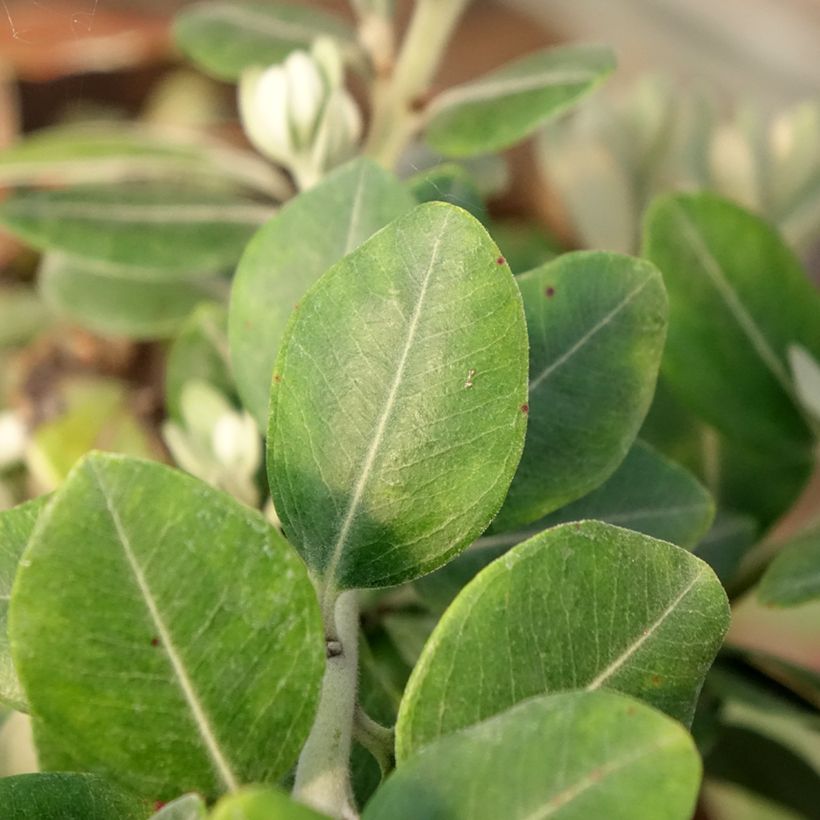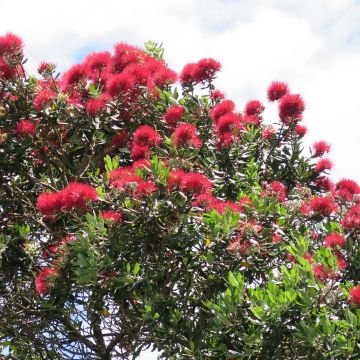

Metrosideros collina Thomasii


Metrosideros collina Thomasii


Metrosideros collina Thomasii
Metrosideros collina Thomasii
Metrosideros collina Thomasii
New Zealand Christmas Tree
Special offer!
Receive a €20 voucher for any order over €90 (excluding delivery costs, credit notes, and plastic-free options)!
1- Add your favorite plants to your cart.
2- Once you have reached €90, confirm your order (you can even choose the delivery date!).
3- As soon as your order is shipped, you will receive an email containing your voucher code, valid for 3 months (90 days).
Your voucher is unique and can only be used once, for any order with a minimum value of €20, excluding delivery costs.
Can be combined with other current offers, non-divisible and non-refundable.
Why not try an alternative variety in stock?
View all →This plant carries a 24 months recovery warranty
More information
We guarantee the quality of our plants for a full growing cycle, and will replace at our expense any plant that fails to recover under normal climatic and planting conditions.
Would this plant suit my garden?
Set up your Plantfit profile →
Description
The Metrosideros x thomasii, sometimes marketed as Metrosideros collina 'Spring Fire', is an evergreen bush from New Zealand appreciated for its spectacular red flowering in spring. Suitable for coastal gardens, it shows great resistance to difficult conditions such as drought, sea spray, and salty winds. This beautiful hybrid, not very hardy, can also be grown in a container, allowing it to overwinter like a citrus plant. It will make a magnificent feature to place on an exotic terrace.
The Metrosideros x thomasii is a hybrid of uncertain origin, probably derived from M. collina. Ben Swane, from Swane Nurseries in Sydney, first cultivated this plant under the name Metrosideros thomasii (invalid name), before it was renamed. In the 1980s, cuttings were sent to New Zealand to Malcolm Woolmore, who propagated and marketed the plant as Metrosideros collina 'Spring Fire'. In 1998, it was introduced to the United States by Monrovia Nursery under the name 'Springfire'. The Metrosideros collina complex extends across the South Pacific, with plants once considered subspecies in Hawaii now classified as Metrosideros polymorpha. Like all Metrosideros, "Thomasii" belongs to the Myrtaceae family.
The Metrosideros x thomasii was selected for its abundant bright pink-red pompom-shaped flowers and its compact, upright form. In the ground, it reaches 4 to 6 meters in height by 3 to 5 meters wide. Its leaves, evergreen in winter, are small, ovate, leathery, and silvery green, while its young stems can display silvery reflections. Flowering, mainly occurring in spring, consists of large red flowers with prominent stamens, resembling pompons that attract numerous pollinators. Flowers may also sporadically appear throughout the year.
The Metrosideros collina 'Spring Fire' is not very hardy and cannot tolerate temperatures below -5/-6 °C. Outside of the mildest coastal regions, where it can be planted in the ground, it is recommended to grow it in a container to protect it from frost.
The Metrosideros x thomasii, on the Atlantic or Mediterranean coast, is interesting for creating dense hedges or for use as a focal point in a large shrub border. In colder regions, it grows very well in a large container, which will help protect it during winter. Pair it with plants such as Phormiums, Cordylines, Agapanthus, and Echium fastuosum, which share the same soil and exposure requirements.
Report an error about the product description
Metrosideros collina Thomasii in pictures




Plant habit
Flowering
Foliage
Botanical data
Metrosideros
collina
Thomasii
Myrtaceae
New Zealand Christmas Tree
Metrosideros collina Spring Fire, Metrosideros collina thomasii
Oceania
Planting and care
The Metrosideros Ferris Wheel will thrive in a light soil, preferably slightly acidic and not too poor, humus-bearing, well-drained, even dry in summer. Ideally, it prefers a slightly acidic to neutral soil (pH between 6.1 and 7.3) but also tolerates slightly alkaline soils. It enjoys sunny exposures. Not very hardy (-6°C at the lowest), this plant is mainly grown in a pot like a citrus plant outside of the most sheltered coastal gardens. It should be taken out in May and brought in for the winter into a frost-free veranda or greenhouse, but with very little heating. To shape it, you can prune the stems in autumn or after flowering to remove any obstructive or unsightly branches and eliminate dead wood.
Cultivation in pots:
Choose a large pot of at least 40 to 50 cm in diameter, with drainage holes at the bottom to provide enough space for the roots. Use a well-drained substrate, composed of potting soil mixed with sand or perlite, as the bush fears excess moisture. Place it in full sun, although it tolerates some partial shade. When in a pot, watering should be regular, but let the substrate dry slightly between waterings. Apply a slow-release fertiliser in spring and summer to promote abundant flowering. In winter, protect the plant by bringing it into a bright, frost-free room, a cool veranda, or a cold greenhouse if temperatures drop below -6°C. Repot every 2 to 3 years to renew the substrate and provide more space for the roots.
Planting period
Intended location
Care
This item has not been reviewed yet - be the first to leave a review about it.
Similar products
Haven't found what you were looking for?
Hardiness is the lowest winter temperature a plant can endure without suffering serious damage or even dying. However, hardiness is affected by location (a sheltered area, such as a patio), protection (winter cover) and soil type (hardiness is improved by well-drained soil).

Photo Sharing Terms & Conditions
In order to encourage gardeners to interact and share their experiences, Promesse de fleurs offers various media enabling content to be uploaded onto its Site - in particular via the ‘Photo sharing’ module.
The User agrees to refrain from:
- Posting any content that is illegal, prejudicial, insulting, racist, inciteful to hatred, revisionist, contrary to public decency, that infringes on privacy or on the privacy rights of third parties, in particular the publicity rights of persons and goods, intellectual property rights, or the right to privacy.
- Submitting content on behalf of a third party;
- Impersonate the identity of a third party and/or publish any personal information about a third party;
In general, the User undertakes to refrain from any unethical behaviour.
All Content (in particular text, comments, files, images, photos, videos, creative works, etc.), which may be subject to property or intellectual property rights, image or other private rights, shall remain the property of the User, subject to the limited rights granted by the terms of the licence granted by Promesse de fleurs as stated below. Users are at liberty to publish or not to publish such Content on the Site, notably via the ‘Photo Sharing’ facility, and accept that this Content shall be made public and freely accessible, notably on the Internet.
Users further acknowledge, undertake to have ,and guarantee that they hold all necessary rights and permissions to publish such material on the Site, in particular with regard to the legislation in force pertaining to any privacy, property, intellectual property, image, or contractual rights, or rights of any other nature. By publishing such Content on the Site, Users acknowledge accepting full liability as publishers of the Content within the meaning of the law, and grant Promesse de fleurs, free of charge, an inclusive, worldwide licence for the said Content for the entire duration of its publication, including all reproduction, representation, up/downloading, displaying, performing, transmission, and storage rights.
Users also grant permission for their name to be linked to the Content and accept that this link may not always be made available.
By engaging in posting material, Users consent to their Content becoming automatically accessible on the Internet, in particular on other sites and/or blogs and/or web pages of the Promesse de fleurs site, including in particular social pages and the Promesse de fleurs catalogue.
Users may secure the removal of entrusted content free of charge by issuing a simple request via our contact form.
The flowering period indicated on our website applies to countries and regions located in USDA zone 8 (France, the United Kingdom, Ireland, the Netherlands, etc.)
It will vary according to where you live:
- In zones 9 to 10 (Italy, Spain, Greece, etc.), flowering will occur about 2 to 4 weeks earlier.
- In zones 6 to 7 (Germany, Poland, Slovenia, and lower mountainous regions), flowering will be delayed by 2 to 3 weeks.
- In zone 5 (Central Europe, Scandinavia), blooming will be delayed by 3 to 5 weeks.
In temperate climates, pruning of spring-flowering shrubs (forsythia, spireas, etc.) should be done just after flowering.
Pruning of summer-flowering shrubs (Indian Lilac, Perovskia, etc.) can be done in winter or spring.
In cold regions as well as with frost-sensitive plants, avoid pruning too early when severe frosts may still occur.
The planting period indicated on our website applies to countries and regions located in USDA zone 8 (France, United Kingdom, Ireland, Netherlands).
It will vary according to where you live:
- In Mediterranean zones (Marseille, Madrid, Milan, etc.), autumn and winter are the best planting periods.
- In continental zones (Strasbourg, Munich, Vienna, etc.), delay planting by 2 to 3 weeks in spring and bring it forward by 2 to 4 weeks in autumn.
- In mountainous regions (the Alps, Pyrenees, Carpathians, etc.), it is best to plant in late spring (May-June) or late summer (August-September).
The harvesting period indicated on our website applies to countries and regions in USDA zone 8 (France, England, Ireland, the Netherlands).
In colder areas (Scandinavia, Poland, Austria...) fruit and vegetable harvests are likely to be delayed by 3-4 weeks.
In warmer areas (Italy, Spain, Greece, etc.), harvesting will probably take place earlier, depending on weather conditions.
The sowing periods indicated on our website apply to countries and regions within USDA Zone 8 (France, UK, Ireland, Netherlands).
In colder areas (Scandinavia, Poland, Austria...), delay any outdoor sowing by 3-4 weeks, or sow under glass.
In warmer climes (Italy, Spain, Greece, etc.), bring outdoor sowing forward by a few weeks.












































